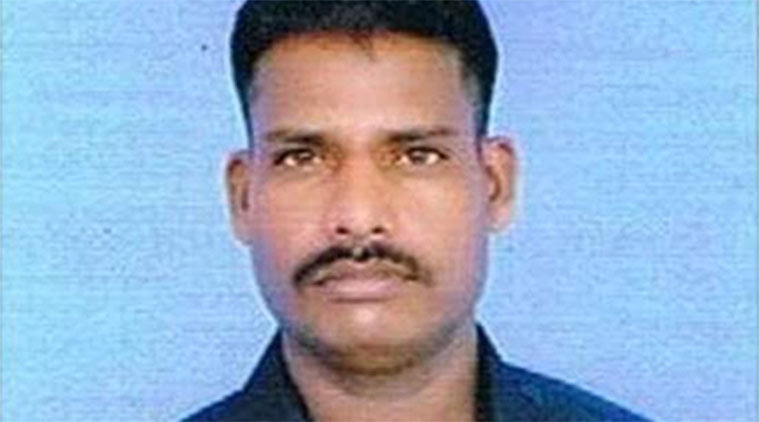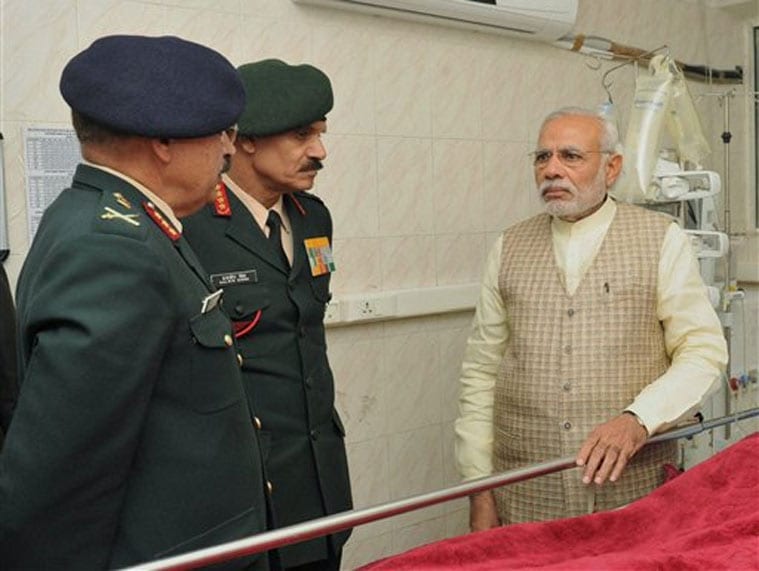The condition of Lance Naik Hanamanthappa, who was miraculously found alive after remaining buried in snow for six days after the avalanche in Siachen, remains critical, according to the medical bulletin.
 Lance Naik Hanamanthappa, who was earlier declared dead by the authorities, was found to be conscious but drowsy and disoriented yesterday after he was located during rescue operation.
Lance Naik Hanamanthappa, who was earlier declared dead by the authorities, was found to be conscious but drowsy and disoriented yesterday after he was located during rescue operation.
Lance Naik Hanamanthappa Koppad, who was miraculously found alive after remaining buried under snow for six days, is comatose and his condition is extremely critical, Army Hospital Research and Referral said after he was flown in here from Siachen Glacier today.
Fortunately, there was no cold exposure-related frost bite or bony injuries to him, a medical bulletin issued by the hospital said.
“He has been placed on a ventilator to protect his airway and lungs in view of his comatose state. He remains extremely critical and is expected to have a stormy course in the next 24 to 48 hrs due to the complications caused by re-warming and establishment of blood flow to the cold parts of the body,” it said.
 Prime Minister Narendra Modi with Army chief Gen Dalbir Singh and head of the medical team in the ward at a ward of Army’s Research & Referral Hospital where Lance Naik Hanumanthappa who is critical, is being treated in New Delhi on Tuesday.
Prime Minister Narendra Modi with Army chief Gen Dalbir Singh and head of the medical team in the ward at a ward of Army’s Research & Referral Hospital where Lance Naik Hanumanthappa who is critical, is being treated in New Delhi on Tuesday.
The soldier, who was earlier declared dead by the authorities, was found to be conscious but drowsy and disoriented yesterday after he was located during rescue operation.
Watch: Here’s how Sashastra Seema Bal jawans brave extreme weather conditions
“He is currently comatose and continues to be in shock with low blood pressure. He has pneumonia and his investigations have revealed liver and kidney dysfunction,” the bulletin read.
He was “severely dehydrated, hypothermic, hypoxic, hypoglycemic and in shock. He was immediately resuscitated by the doctors at the site, who had been there for the past five days in the hope of a survivor,” it said. He was treated with warm intravenous fluids, humidified warm oxygen and passive external re-warming.
Koppad was flown out from the site today by helicopter along with a medical specialist to the Siachen Base Camp, from where he was brought to the Thois air base.
He was then transferred to Delhi by a fixed-wing aircraft of IAF along with a critical care specialist of the force and a medical specialist from the base camp.
Koppad is being treated by a team of intensivists, neurologist, nephrologist, endocrinologist and surgeons. He has been administered fluids, drugs to bring up his blood pressure, besides antibiotics.
Prime Minister Narendra Modi, along with Army Chief Gen Dalbir Singh Suhag, had visited the hospital earlier today.
Modi said Koppad is an “outstanding soldier” whose “endurance and indomitable spirit” cannot be described in words. “We are all hoping & praying for the best,” Modi added.
On his part, Suhag commended the brave heart for his indomitable mental robustness and his refusal to give in to harsh elements of nature.
He also conveyed best wishes on behalf of all ranks of the army for his early and complete recovery.
– See more at: http://indianexpress.com/article/india/india-news-india/siachen-avalanche-survivor-lance-naik-hanamanthappa-critical/#sthash.2Jh4ENnw.dpuf
































































